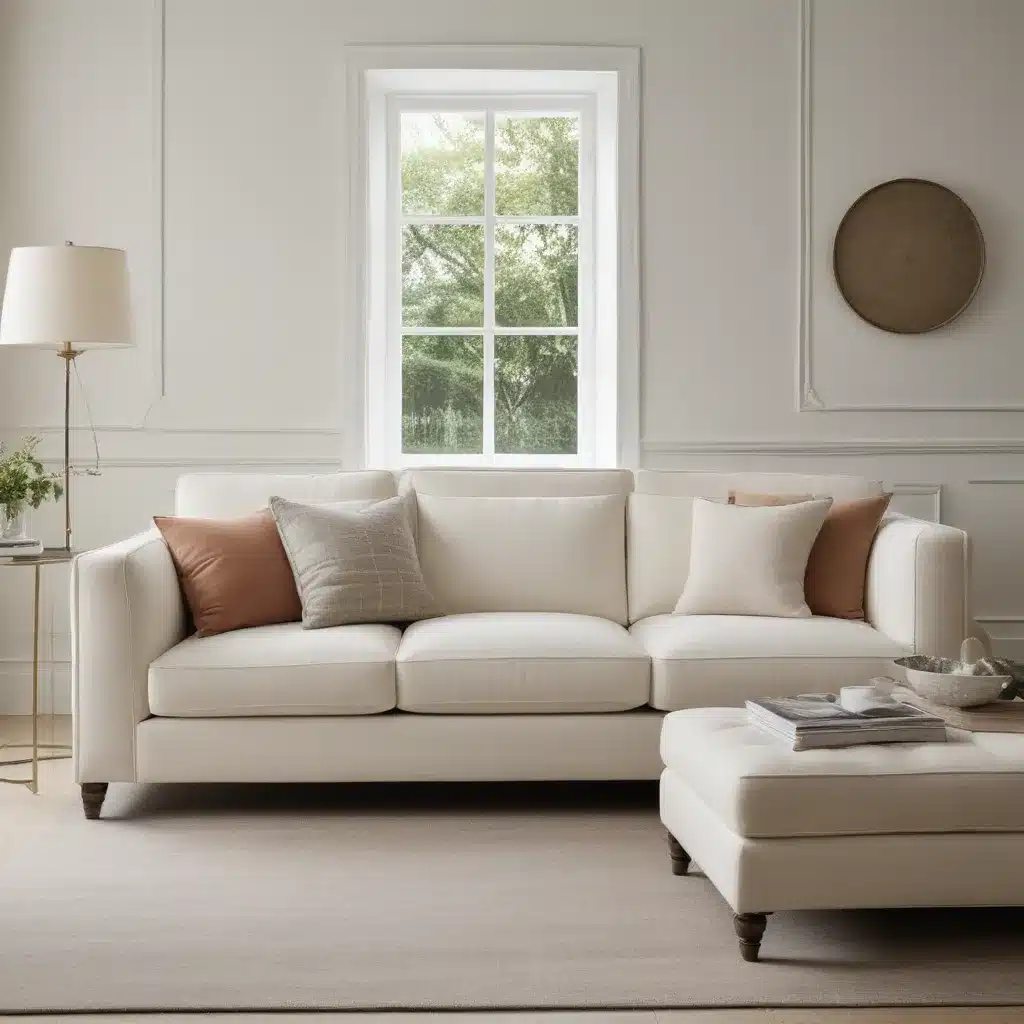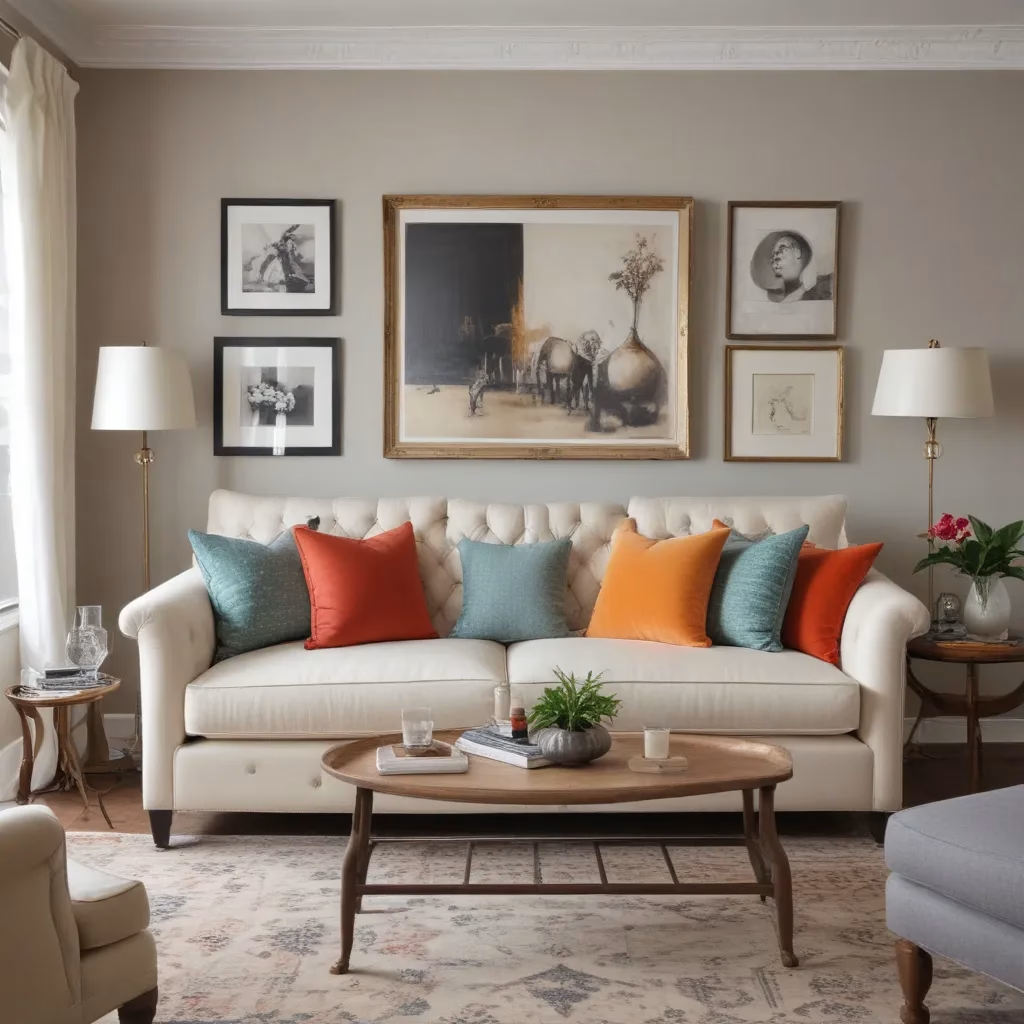Unleash Your Creativity with Customizable Couches
Have you ever dreamed of a sofa that perfectly encapsulates your personal style? Well, my furniture-loving friends, your dreams are about to become a reality. Welcome to the world of custom-made sofas, where the possibilities are as endless as your imagination.
As the proud owner of a brand new place, I found myself in a bit of a quandary. Furnishing a home from scratch can be an exhilarating yet daunting task. Sifting through countless options, I quickly realized that the perfect sofa for my space and style simply didn’t exist – at least, not off the rack. That’s when the lightbulb went off: why not create my own?
The Art of Sofa-Making: A Deeper Dive
Now, I know what you’re thinking – building a sofa from scratch? That’s got to be an impossible feat, right? Well, let me tell you, it’s not as daunting as it may seem. In fact, with a little bit of research and elbow grease, you can craft a stunning, one-of-a-kind piece that will be the envy of all your guests.
To start, it’s important to understand the two main approaches to sofa construction: the traditional and the modern. The traditional route involves intricate, carved wood frames and cushions that are built right into the fabric. These vintage-inspired beauties certainly have their charm, but they also require a significant amount of specialized upholstery skills and tools – skills that, let’s be honest, most of us mere mortals don’t possess.
Enter the modern sofa design, my friends. This approach separates the cushions from the frame, making the whole process much more DIY-friendly. The key components are a sturdy, clean-lined wooden base, a system of springs or webbing to provide support, and, of course, the all-important cushions. By focusing on this contemporary style, I was able to tackle the project with a bit more confidence and a whole lot less stress.
Mastering the Mechanics: Springs, Webbing, and Beyond
As I dove deeper into the world of sofa-making, I quickly realized that the support system underneath the cushions is the real unsung hero of the piece. Sure, the fabric and the frame might be what catches the eye, but it’s the springs or webbing that determine the comfort and longevity of your creation.
The two main options are S-springs, those wavy steel contraptions you often see when flipping a couch over, and the far more premium eight-way tied springs. The latter, as the name suggests, are coiled springs that are intricately woven and secured together, creating a sturdy and supportive foundation. While the eight-way tied springs may come with a heftier price tag, they’re the reason why some sofas can cost upwards of £2,000 – and trust me, the difference in comfort is worth it.
For my own project, I opted for the more budget-friendly webbing approach. This involves strategically weaving semi-elastic bands across the frame, creating a flexible yet stable base. It’s a bit less expensive and a tad easier to install, though it may not hold up as well to heavy use or overzealous jumps from little ones. But hey, for a casual, low-traffic space like mine, it’s the perfect solution.
Measuring Up: The Ins and Outs of Sofa Dimensions
Now, before you start cutting any wood or sewing any cushions, it’s crucial to have a solid understanding of sofa dimensions. After all, you don’t want to end up with a piece that’s too big to fit through the door or too small to accommodate your height and seating needs.
The standard three-seater sofa clocks in at around 85 inches long, 35 inches deep, and 35 inches high. But these are just general guidelines – the perfect size for your space will depend on a few key factors. Seat height, for instance, can range from 13 to 20 inches, with 18 inches being the most common. Seat depth, meanwhile, typically falls between 20 and 21 inches. And the back height? That’s usually around 15 inches.
Now, I know what you’re thinking – that’s a lot of numbers to keep track of! But trust me, once you start sketching out your design and measuring your space, it all starts to come together. And don’t be afraid to get a little creative with the proportions. After all, the beauty of a custom sofa is that you can tailor it to your exact specifications.
Fabric, Foam, and Finishing Touches
With the structural elements sorted out, it’s time to turn our attention to the fun stuff: fabric and cushions. Now, I’ll admit, I’m not the most seasoned seamstress, but even I was able to whip up a set of plush, custom-fitted cushions for my sofa.
For the upholstery, I opted for a luxurious microfiber fabric. Not only is it soft and cozy, but it’s also relatively inexpensive and easy to work with. Plus, it comes in a wide range of colors and patterns, allowing me to truly personalize my creation.
As for the cushions, I ordered a set of high-density foam inserts and used them to fill my handmade covers. Now, I’ll let you in on a little secret: compressing those foam blocks before stuffing them into the covers makes the whole process a breeze. Just pop them into a plastic bag, give them a good vacuum, and watch them magically transform from rock-hard blocks to plump, pillowy perfection.
With the cushions in place and the frame stained to perfection, all that’s left is to add those finishing touches. I decided to whip up a few accent pillows in complementary shades of blue to really make my custom sofa pop. And let’s not forget the all-important USB port – because what’s a modern masterpiece without the ability to charge your devices, am I right?
The Joys (and Challenges) of DIY Sofa Building
Alright, let’s be honest – building a sofa from scratch is no walk in the park. It’s a labor of love, complete with its fair share of challenges and frustrations. But let me tell you, the sense of accomplishment you’ll feel when you sink into that plush, one-of-a-kind creation is truly priceless.
Sure, it took me the better part of two months to complete my project, working on it over countless weekends. And yes, I had to invest in a fair bit of specialized tools and materials. But when I look at my custom-built sofa, I see a piece that is not just functional, but a true reflection of my personal style and design sensibilities.
So, if you’re up for a bit of a project and you’re craving a sofa that’s as unique as you are, I highly encourage you to give custom sofa-making a try. Who knows, you might just discover a hidden talent for furniture design – and you’ll end up with a stunning new centrepiece for your living room to boot.
And if DIY isn’t quite your thing, fear not! There are plenty of amazing custom sofa companies out there, like Sofas Spectacular, who can bring your vision to life with their expert craftsmanship and attention to detail. So, whether you’re a seasoned DIYer or you prefer to leave the heavy lifting to the professionals, the world of custom-made sofas is your oyster.
A Final Word of Advice
As you embark on your custom sofa journey, whether it’s a hands-on DIY project or a collaboration with a talented furniture maker, remember to have fun with the process. Embrace the challenges, celebrate the small victories, and above all, let your personal style shine through.
After all, the beauty of a tailor-made sofa lies not just in its comfort and functionality, but in the story it tells about you and your unique design preferences. So, go forth, my friends, and create something truly spectacular. Your dream sofa awaits!




